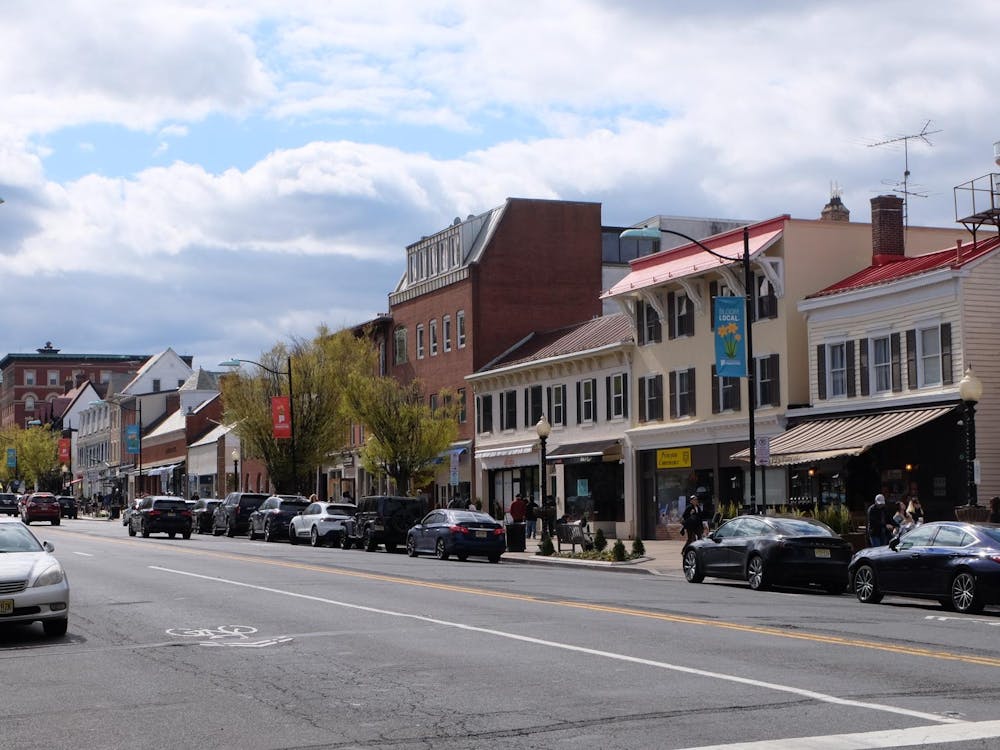To appreciate the role that social media plays in the Arab Spring, London revolts or Occupy movements, we must first understand how larger media networks function and encourage civic participation, according to Ethan Zuckerman, director of the Center for Civic Media at Massachusetts Institute of Technology and principal research scientist at MIT’s Media Lab, who spoke in a lecture Thursday night in Sherrerd Hall.
Zuckerman described civic media as the “intersection of two different spheres”: civic engagement or larger issues of social change and participatory media such as blogs, Facebook and Twitter, which have created “an ecosystem” in which users can easily share content.
In the past five years, media experts have debated the extent to which civic media spurs social change, Zuckerman explained. He cited New Yorker staff writer Malcolm Gladwell’s “null hypothesis” that real activism cannot be virtual because it requires physical presence, physical risk and strong ties of affection with fellow protestors, who are often friends and family members.
However, he said, “Today, many of us have strong ties online while our real ties are weak in comparison,” and added that new media facilitates mass mobilization.
Other analyses of the effects of social media come close but don’t capture the whole picture. Though analysts have an idea of how protests originate, “the problem is that protests really only get sexy after the government has shut down the Internet,” Zuckerman said. “The model helps explain why it starts, but we need a model afterward.”
Zuckerman cited the overthrow of President Ben Ali in Tunisia as a clear example of how social media’s influence comes not just from being online but being part of “a much bigger media system.” The Tunisian government was always crafty, he said, “putting a friendly face to the outside world while being heavy on censorship.” Zuckerman recalled a world summit of information technology hosted in Tunisia, in which the government dismissed citizens from work in Tunis and then installed metal gates obscuring the rough sections of the capital they did not want the delegates to see.
In Gafsa, a town where mining is the major form of employment, he said, “the [employment] exam is rigged for certain families so everybody who failed had no future.” When the people protested their condition, “the government quarantined them and then fired rubber bullets and live ammo [at them],” he added.
However, the nature of protests started to change with revolts in another town called Sidi Bouzid, he said. Although the government had fully controlled local protests, people started standing on their doorsteps, filming videos and then putting them on Facebook. “Facebook was the only site the government had tried to block and failed,” Zuckerman said.
Here, Zuckerman altered the traditional narrative of social media spread. “People always say something popped up on Facebook and then ‘it went viral,’ ” he said. “Anytime they say that, they are really saying they have no idea of what actually happened.” The overthrow of the government did not occur through Facebook alone, he explained, but through a larger media network and selective imaging.
An outside website started by a Tunisian dissident gathered data about the protests on Facebook in Arabic, translated it, organized it into timelines and packaged it for Al Jazeera, the large Middle Eastern news network that Ben Ali had never allowed to station in the country. Al Jazeera, visible throughout the region, broadcast information about the protests on satellite TV.
“In cafes all over town, people are watching the protest,” Zuckerman said. “They are pissed off at the government, lack of employment and lack of opportunity, and they are inspired to join the larger movement.”
The protests in Cairo could be similarly misunderstood, he said, explaining that the popular movement in Egypt was not orchestrated by a small group of computer masterminds, but by “a media team trying to figure out how people perceived the Tahir Square protests in different parts of the country.” The Egyptian protest movement successfully “injected their narrative” into the larger global media, he said. “This is why we saw Coptic Christians praying in front of Muslims and why we didn’t see as much involvement from the Muslim Brotherhood. This was a movement that understood how to create and disseminate media.”

Cody Kitchen ’14 said he thought that Zuckerman’s presentation was “interesting and compelling.”
“I liked how he knocked the notion of events ‘going viral’ because people generally only have a cursory understanding of how systems of connections work,” Kitchen said.
He added that he liked Zuckerman’s depiction of successful media as creating a means by which citizens can respond and take the next step by actively participating. “It provides a good lens for understanding functional social media as opposed to social media that is basically dead,” he said.







